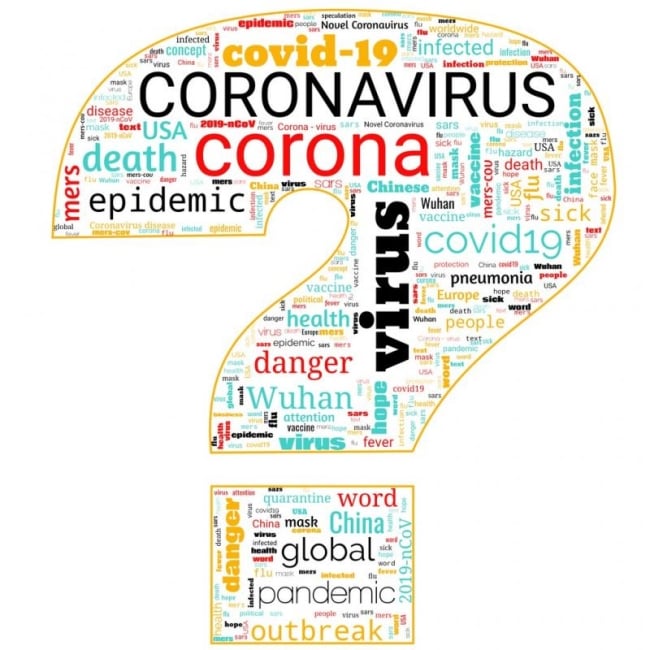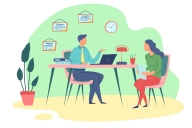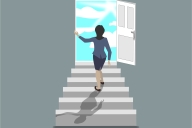You have /5 articles left.
Sign up for a free account or log in.

Istockphoto.com/kira-Yan
Twice last year, one of us -- Jill, a professor at Southern Methodist University -- walked into classes populated by students who were acutely aware of horror. They wrote in discussion posts in real and profoundly personal ways about feeling helpless, and hopeless, in the wake of the Tree of Life synagogue shooting and the New Zealand mosque attack. As they studied philosophical, comparative and social scientific approaches to religion, students wanted -- needed -- some way to make sense of their relationship to horrendous violence and its consequences.
One student wrote about realizing for the first time that people wanted to kill him because of his religious heritage. Another expressed profound frustration that such things happen despite education, governance or other factors that we commonly think of as mitigating.
We’re in a similar place today. Disruptions caused by the COVID-19 virus have left students, faculty members, administrators and parents profoundly uprooted. With classes moved online, students and faculty displaced from campuses, looming economic fallout, and the threat of a very real contagion and its devastation, it is a deeply anxious time for all of us.
What can we do to acknowledge that anxiety without letting it take over? How can we create the conditions that will allow us to speak openly about what this experience means and go deeper in, rather than avoid it? How might we meet this moment in such a way that our students and our communities find the sources of strength we so vitally need in the days and months ahead?
We must first recognize that anxiety will be in the [Zoom/Canvas/Google Hangouts/Groups] room, whether we address it or not. Finding structured ways to acknowledge that anxiety and transform it into meaning and purpose allows it to exist without completely taking over, thus making space for connection to one another and to course content. In addition, reflection exercises -- brief journaling, check-ins and -outs, time to think on a guided question, opportunities to ask questions of each other -- lead to the kind of engagement that allows students to better understand themselves and their connection to other people and ideas. Taking a pause, in other words, can lead to the kind of productive curiosity that allows us to find strengths and even hope in the midst of disruption.
So, what does this look like? It can’t happen by chance or accident. We need to be intentional and consistent in creating spaces for students to engage with the evolving world around them. Based on processes pioneered by Essential Partners -- where Jill is a faculty associate and the other of us, John, is co-executive director -- and developed in collaboration with a team of academics from several disciplines, dialogic classrooms structured for listening and deep engagement offer some models.
Taking a few minutes at the beginning of class to ask students to think about a time when they’ve faced a major life challenge and found the strength to overcome it, where they found or learned that strength, and who helped them at that time is a start that may keep some of the demons of chaos at bay. Students can recall that this is not the first time that disruption has touched them.
Similarly, asking students to take a few minutes to name what the virus has taken away from them, and why they miss it, may help reduce a generalized anxiety and make it specific, even answerable. Students may miss being in a lab or on a sports team. But if it’s the people in those labs or on those teams that they come to realize they really miss, maybe they can find a way to connect. If it’s the routine, maybe they can recreate that as they’re in a new situation. Then, asking what opportunities the changes we are all living through provide, or what hopes or gifts people have as they navigate those changes, may allow students to recognize possibility and agency where they don’t believe or have forgotten they have it.
After the Tree of Life and the New Zealand mosque shootings last year, Jill invited students to fill out 3x5 cards. On one side, they finished the sentence “I can …” On the other side, “I will …” She didn’t collect the cards. In fact, some students report still having them and being grateful for the space to think about their own reactions to the events. The exercise didn’t solve the problem of religious violence, but it did create a space where students could pivot from generalized anxiety and despair to something like localized, even internalized, purpose and hope.
Good questions, and the courage and care to create community, can do that. In this time of disruption, it is something educators can, and should, provide.
Here are some suggestions for check-ins:
- Cite one thing that’s made you feel rooted in the last few days.
- Name something that’s recently brought you comfort.
- Talk about one person you’re supporting right now. How are you doing that?
- What’s the best thing you decided to do this week? What made it the best?
- Bring an object from where you are to share. What’s meaningful about it?
Choose one question and invite students to reflect on it for a minute, then briefly report back.
Some ideas for longer discussions include:
- Tell a story about a time when you found the strength to overcome a challenging situation. Where did you learn or acquire that strength? Who supported you then? When and how have you supported others?
- Tell a story about a time when something was uncertain for you. How did you react? In thinking about the way(s) you reacted, what are you proud of? What would you change? What values or beliefs do you draw on as you think about this story?
- Tell a story that would help us understand what’s changed for you as a result of the virus. Is there something in particular that you miss? What hopes or opportunities might you see in your new situation?
Finally, we suggest some ways you might use 3x5 cards to stimulate student thinking.
- Side one: What I can do in the next weeks or months. Side two: What I will do.
- Side one: I have shared this experience with … Side Two: I want to share this experience with …
COVID-19 has been disruptive to an extreme that many of us could not have imagined, and it’s a safe bet that the vast majority of professors and students are struggling to teach and learn in the ways we know best. Leaning into that disruption together, however, can make us even more connected and strengthen the communities that classrooms form and, down the road, the institutions of which they are a part.








